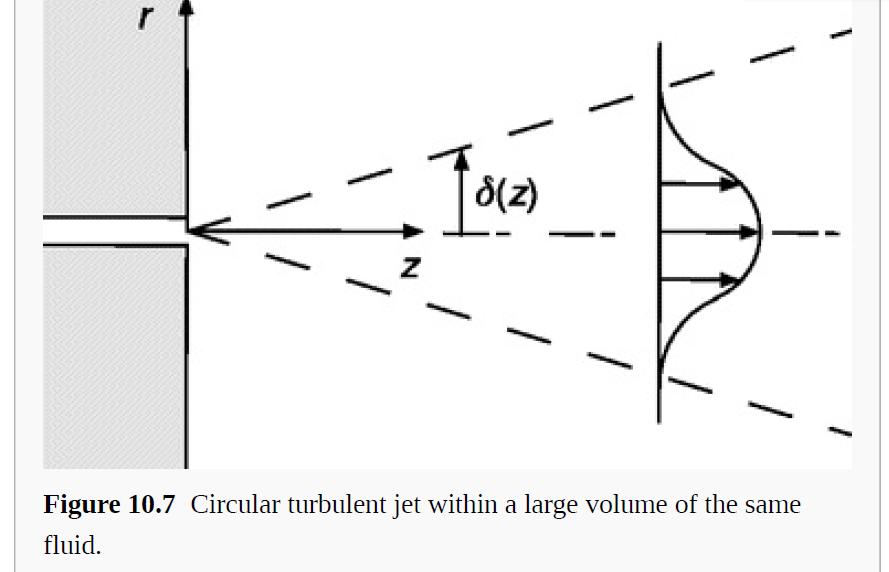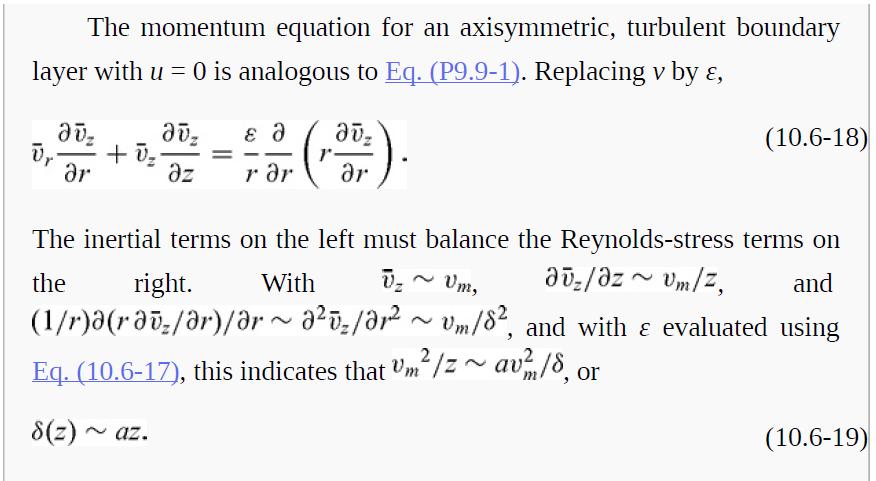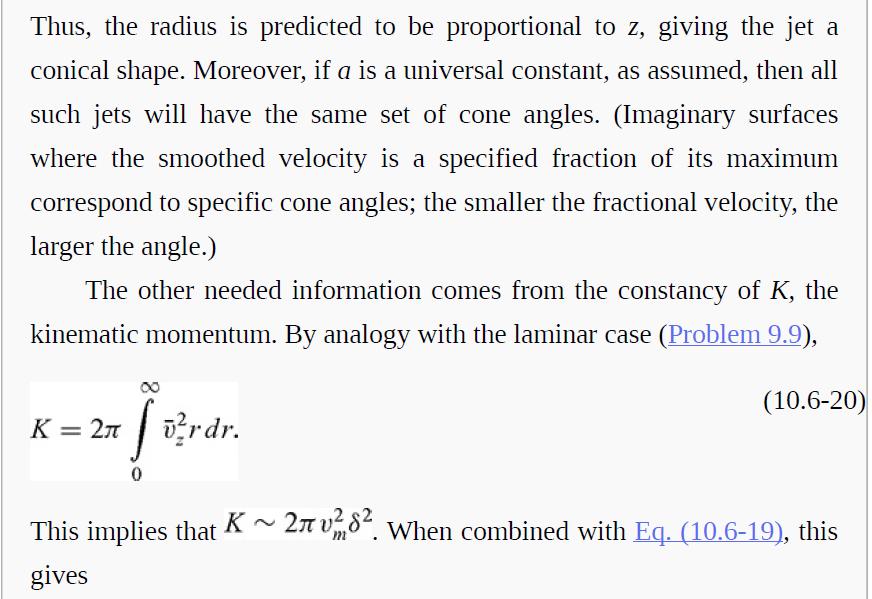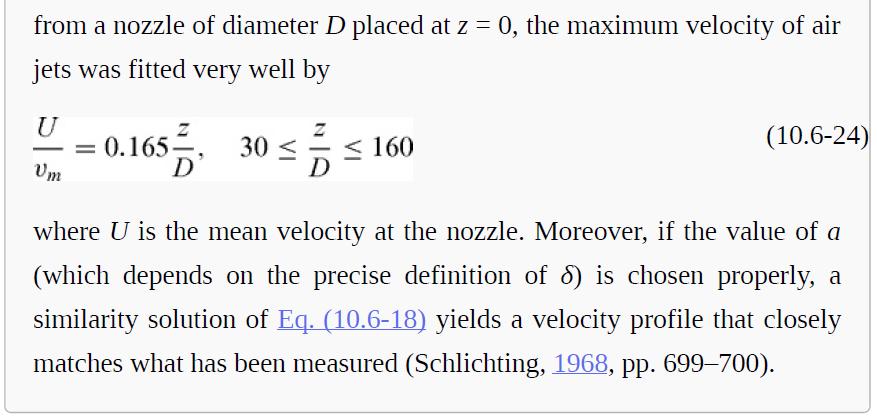Axisymmetric, submerged turbulent jets are conical on average (Example 10.6- 2). As shown in Fig. P10.12, let
Question:
Axisymmetric, submerged turbulent jets are conical on average (Example 10.6- 2). As shown in Fig. P10.12, let β be the angle at which the velocity at any z is half-maximal. It has been found experimentally that tan β = 0.096 (Panchapakesan and Lumley, 1993). The objective is to see what this implies about the magnitude of ε⁄ν.
(a) An analytical solution of Eq. (10.6-18), obtained using the similarity method, yields velocity profiles that closely mimic the shape of those measured by many investigators. The solution is (Schlichting, 1968, p. 220)
where the kinematic momentum K is as defined in Eq. (10.6-20). At what value of ξ is the velocity half-maximal?
(b) Show that the experimental value of β implies that
(c) Use the result from part (b) and the correlation in Eq. (10.6-24) to show that
where Re = UD⁄ν is the Reynolds number at the nozzle. This indicates that ε⁄ν will be large, as assumed in Eq. (10.6-18), whenever Re is at least in the thousands. Because the Reynolds stresses in such a jet greatly exceed the viscous stresses, its spreading angle β is much larger than that of an otherwise-identical laminar jet.












Step by Step Answer:

Introduction To Chemical Engineering Fluid Mechanics
ISBN: 9781107123779
1st Edition
Authors: William M. Deen





